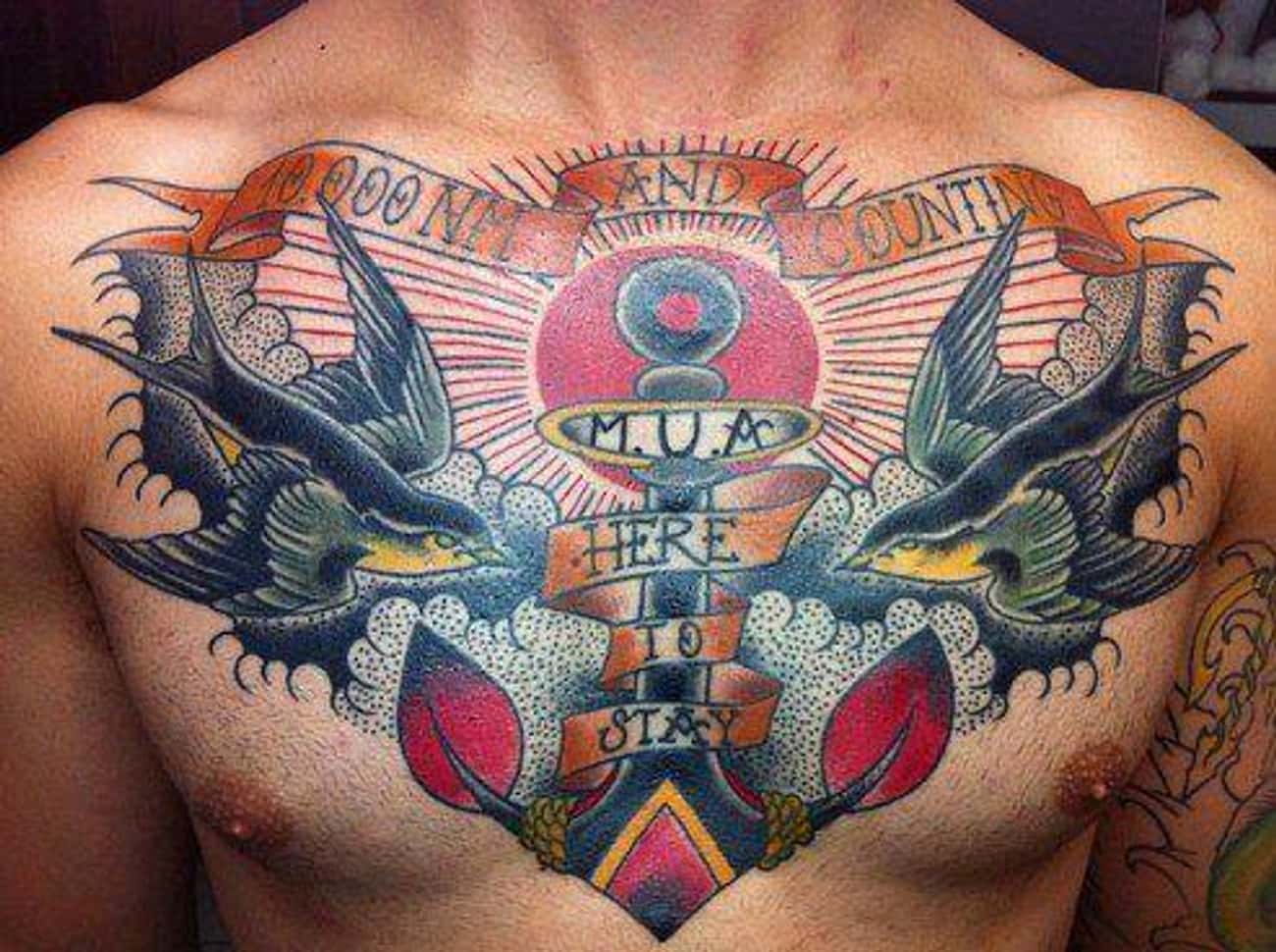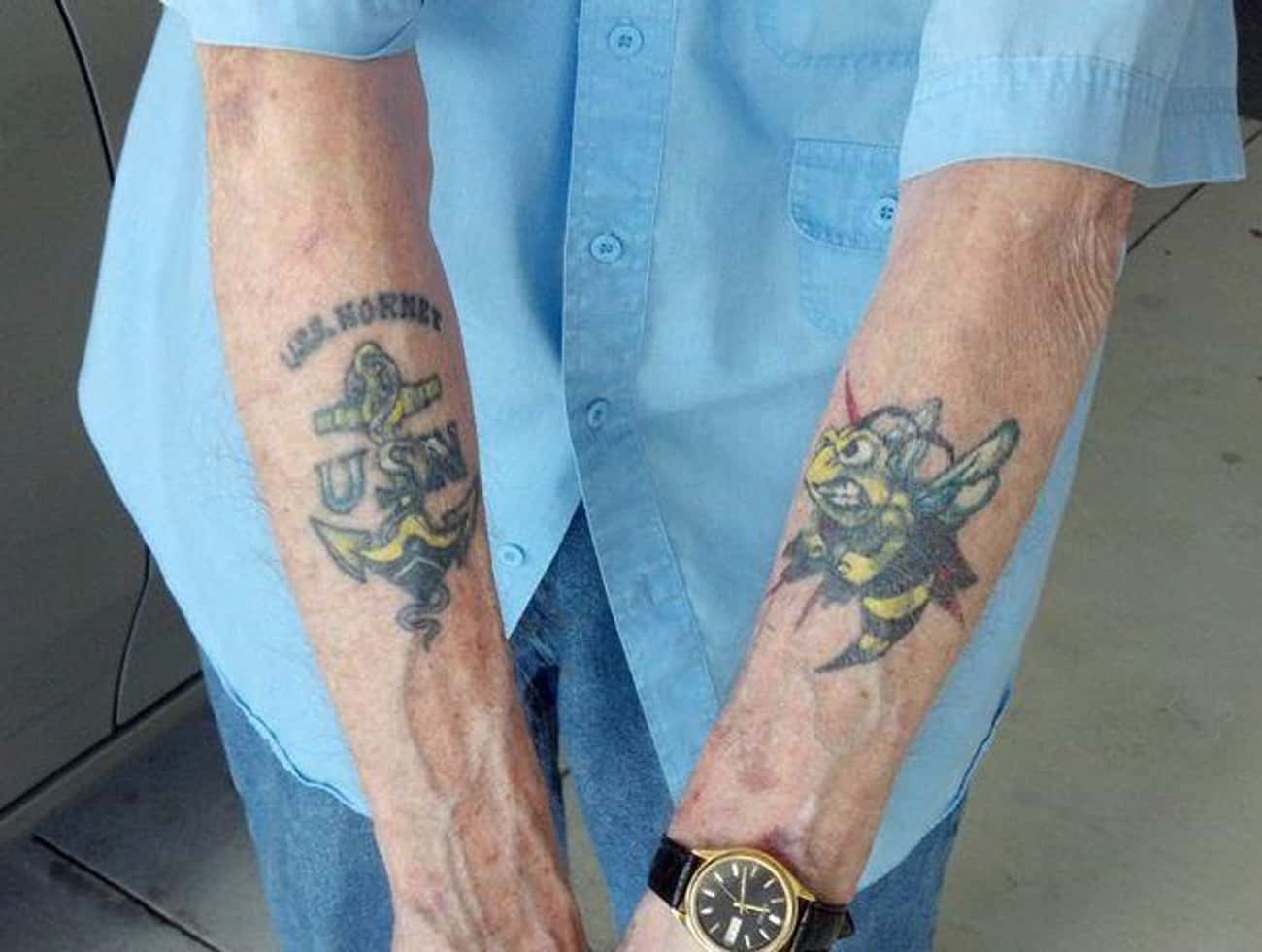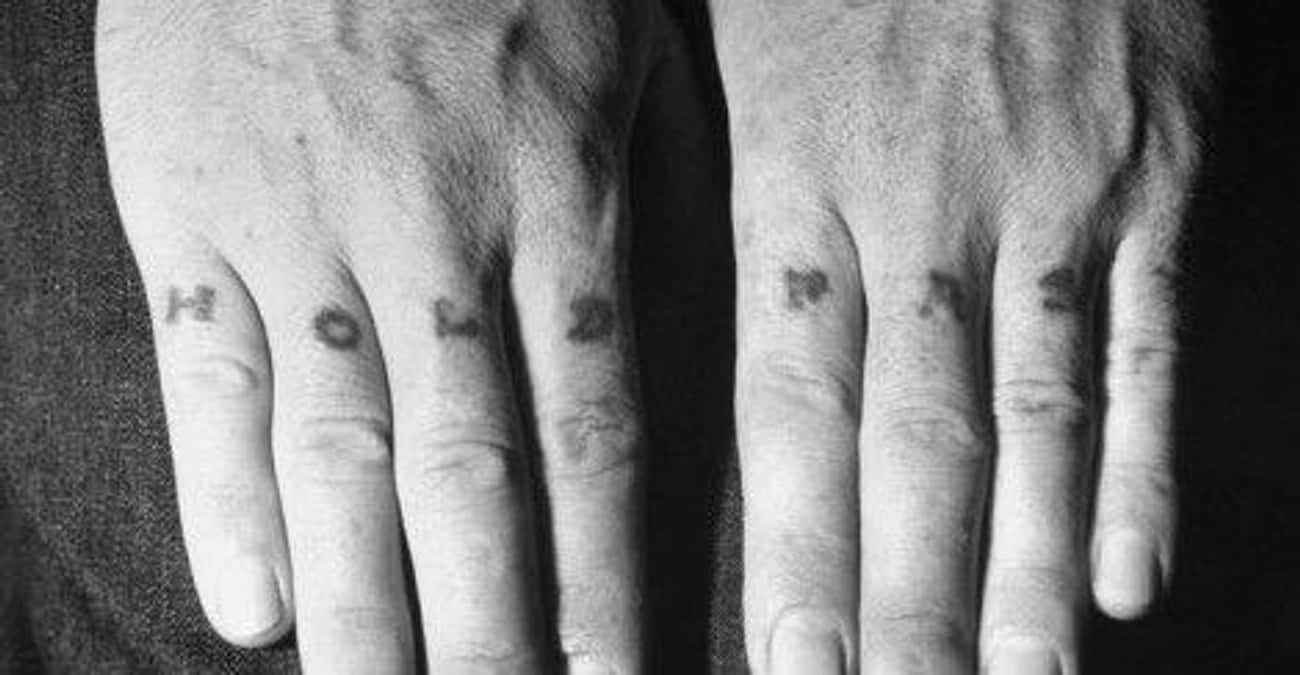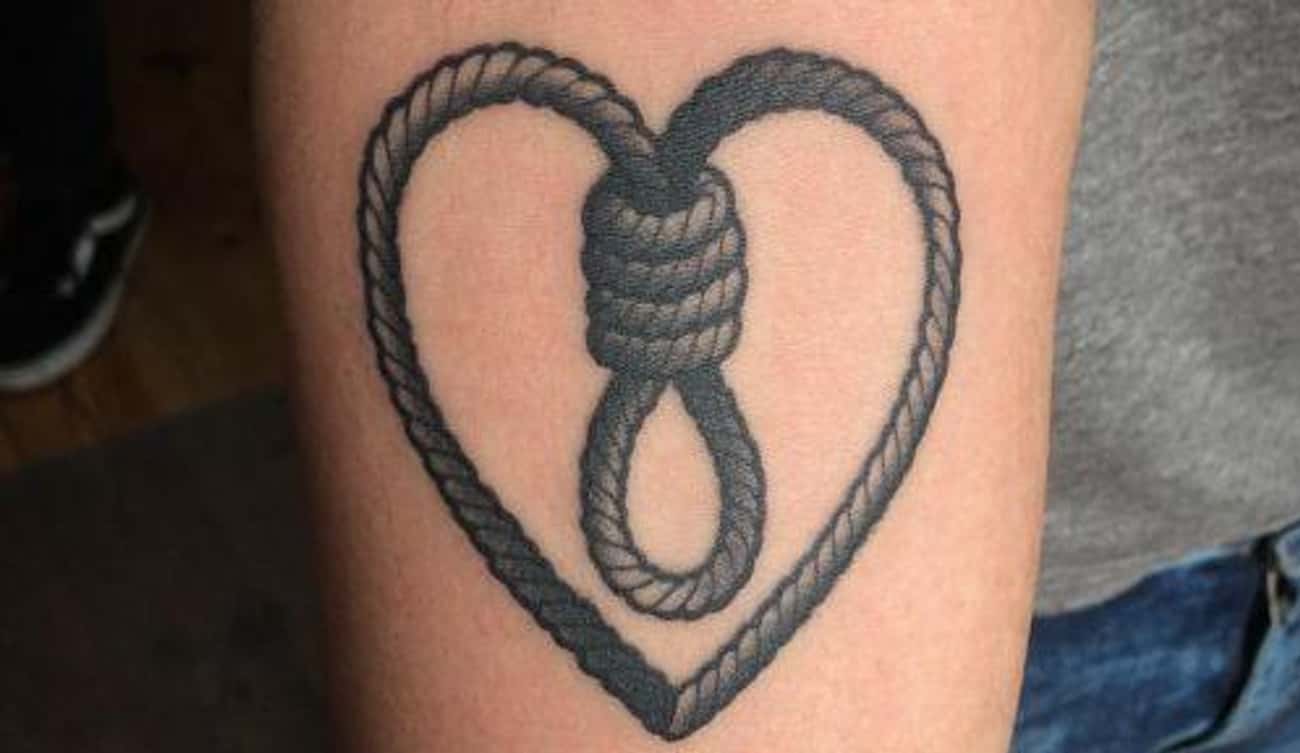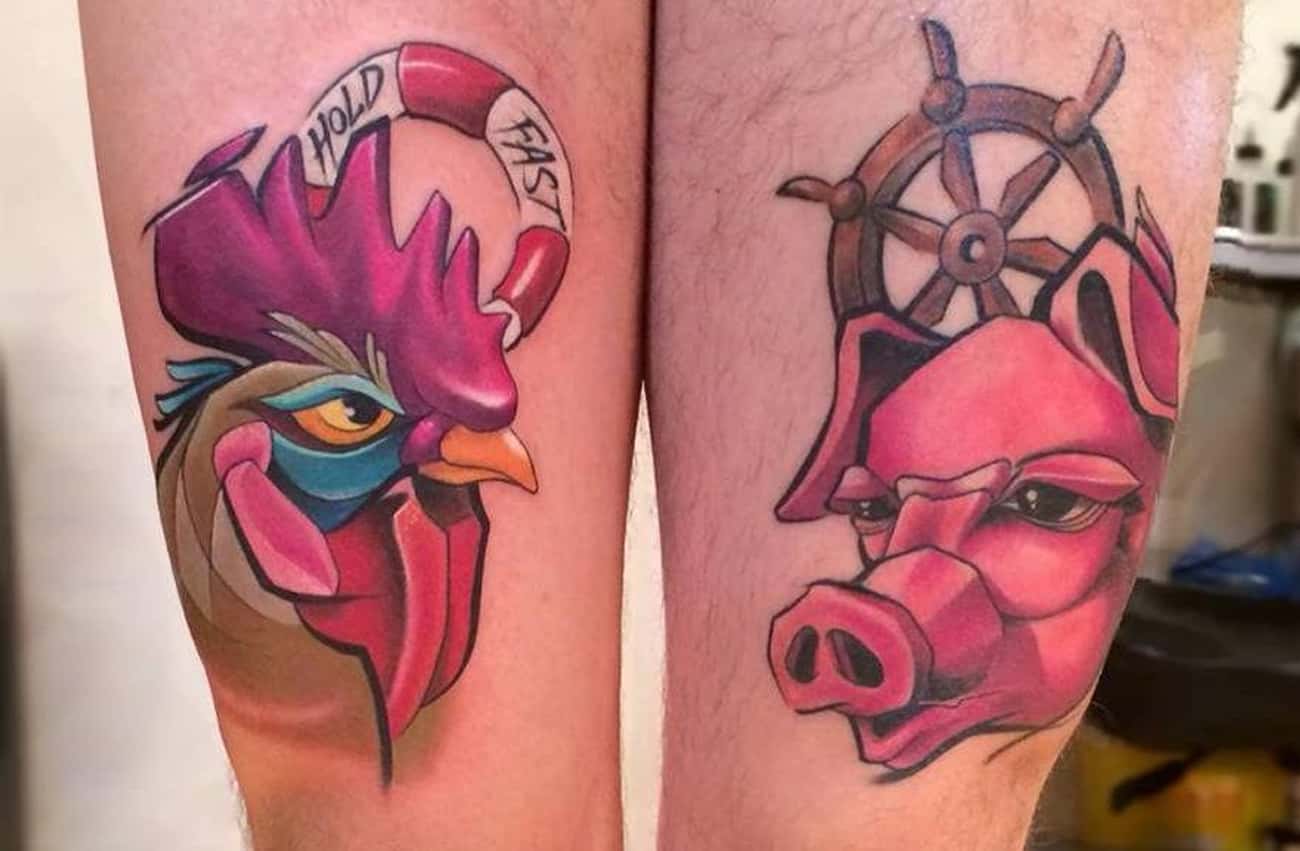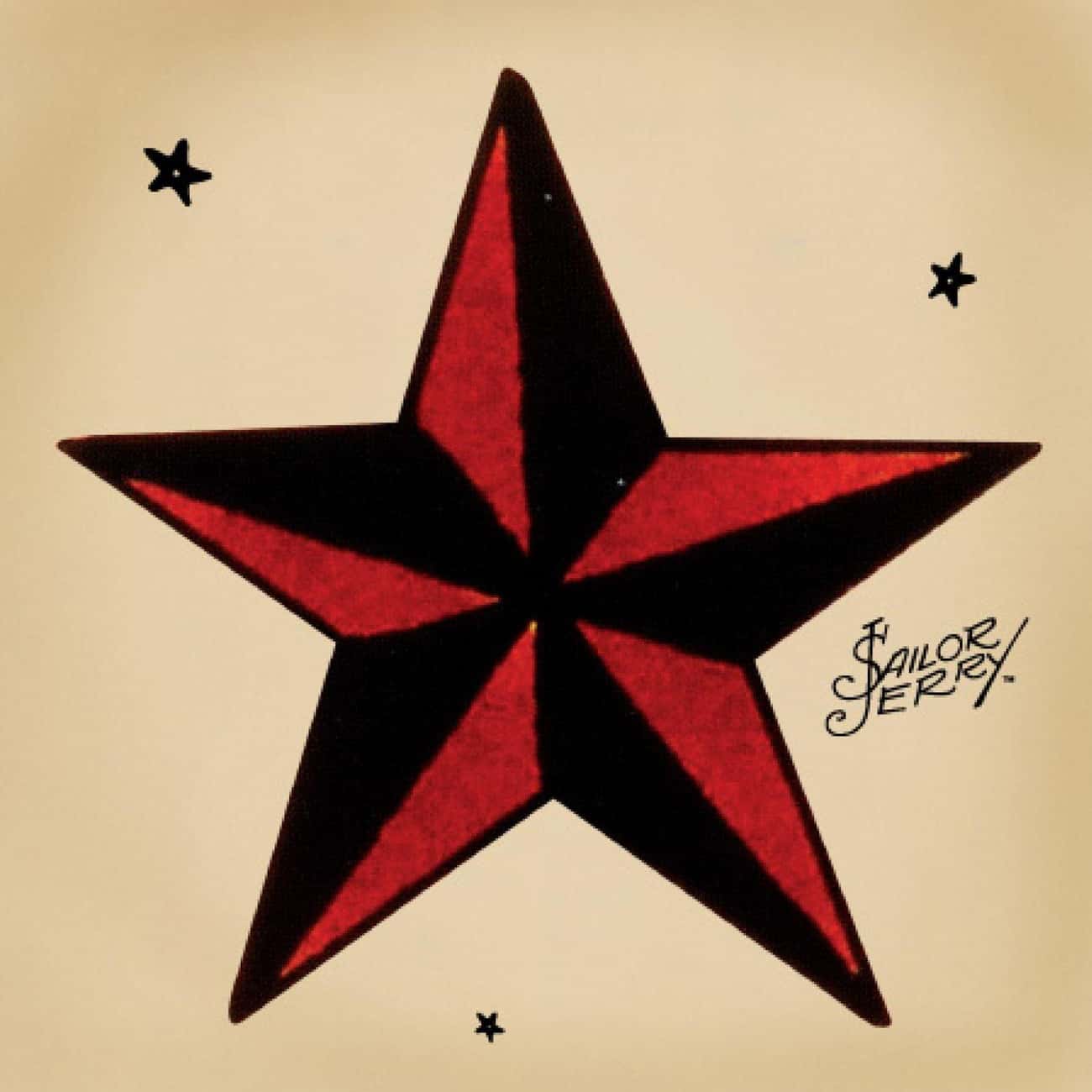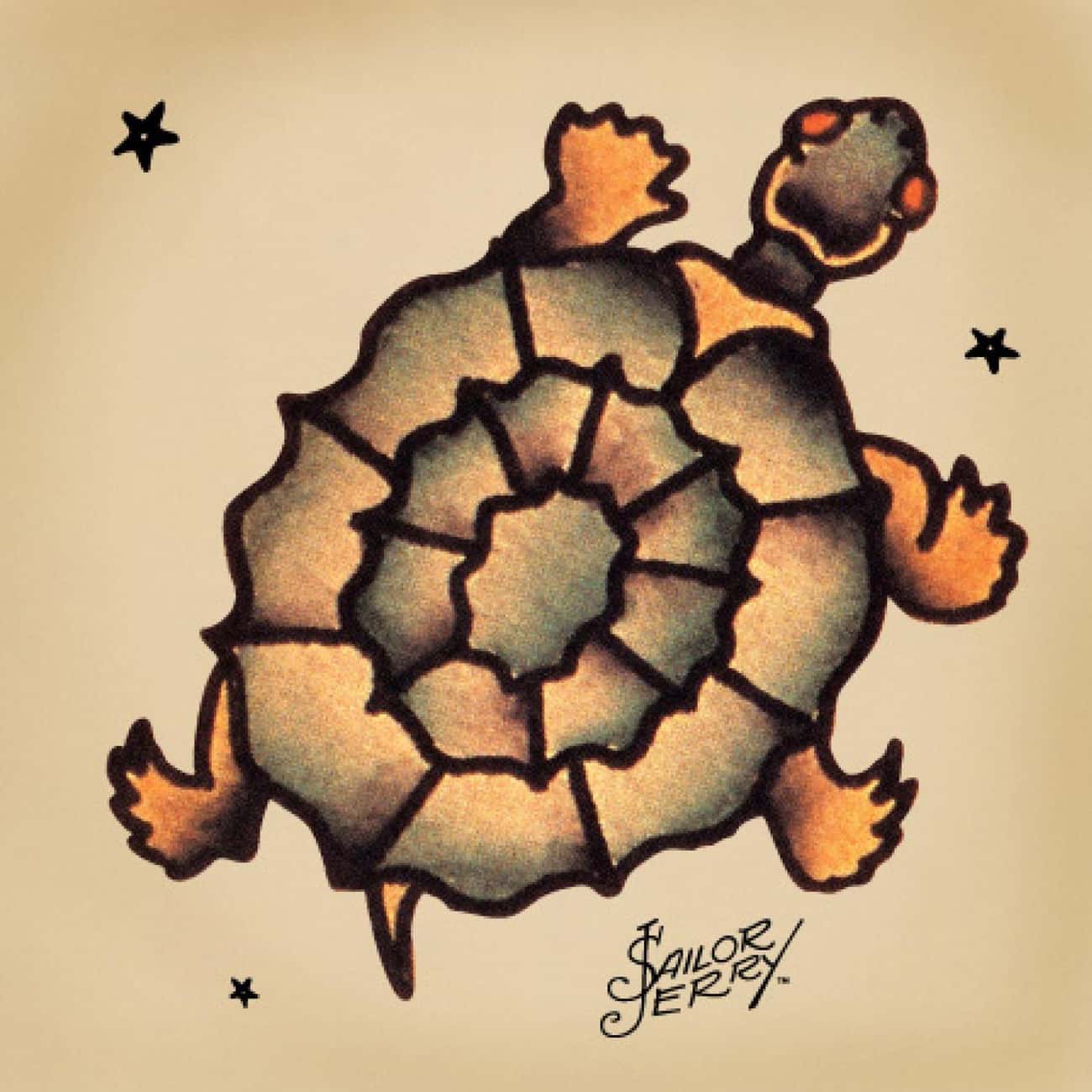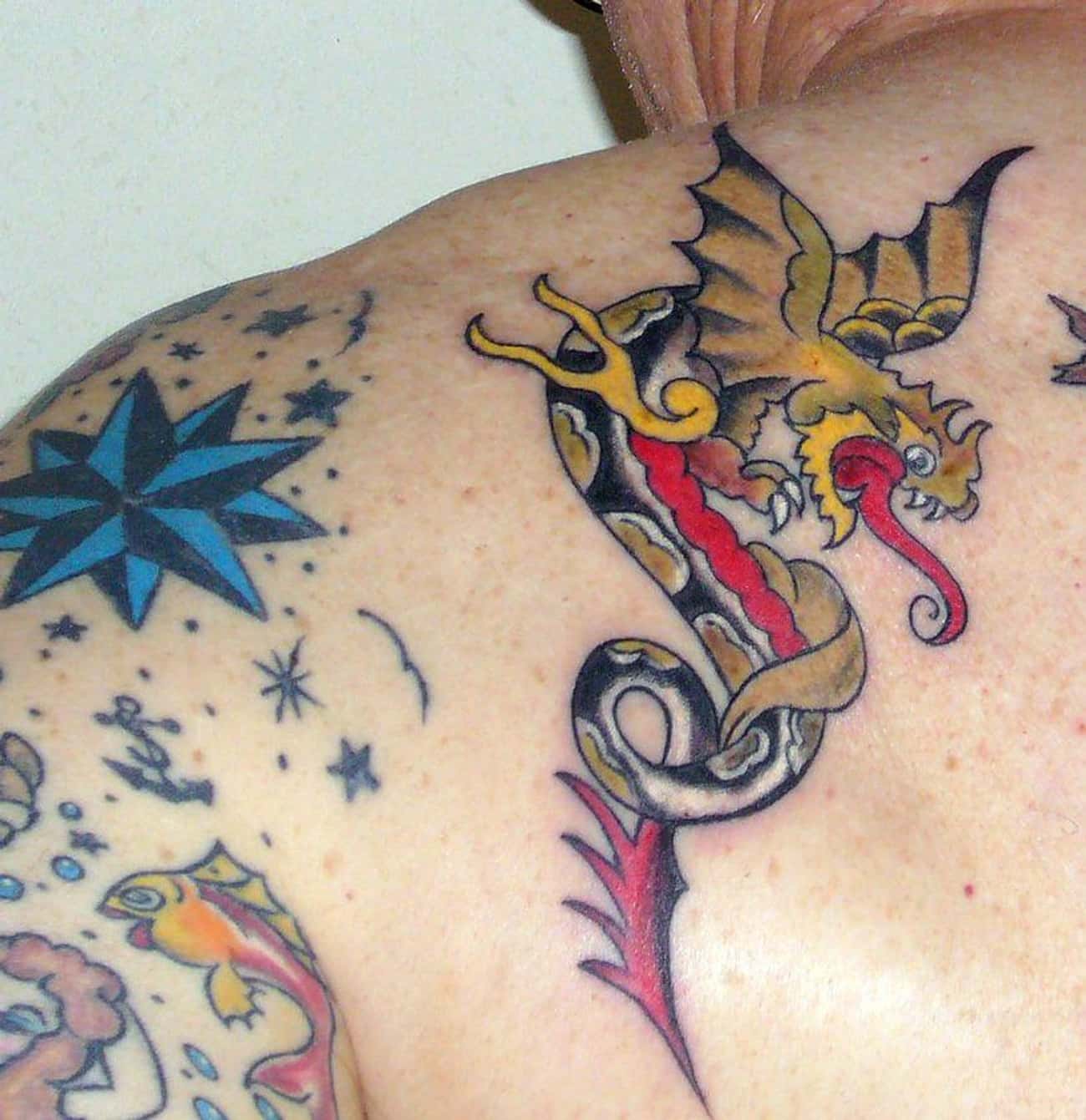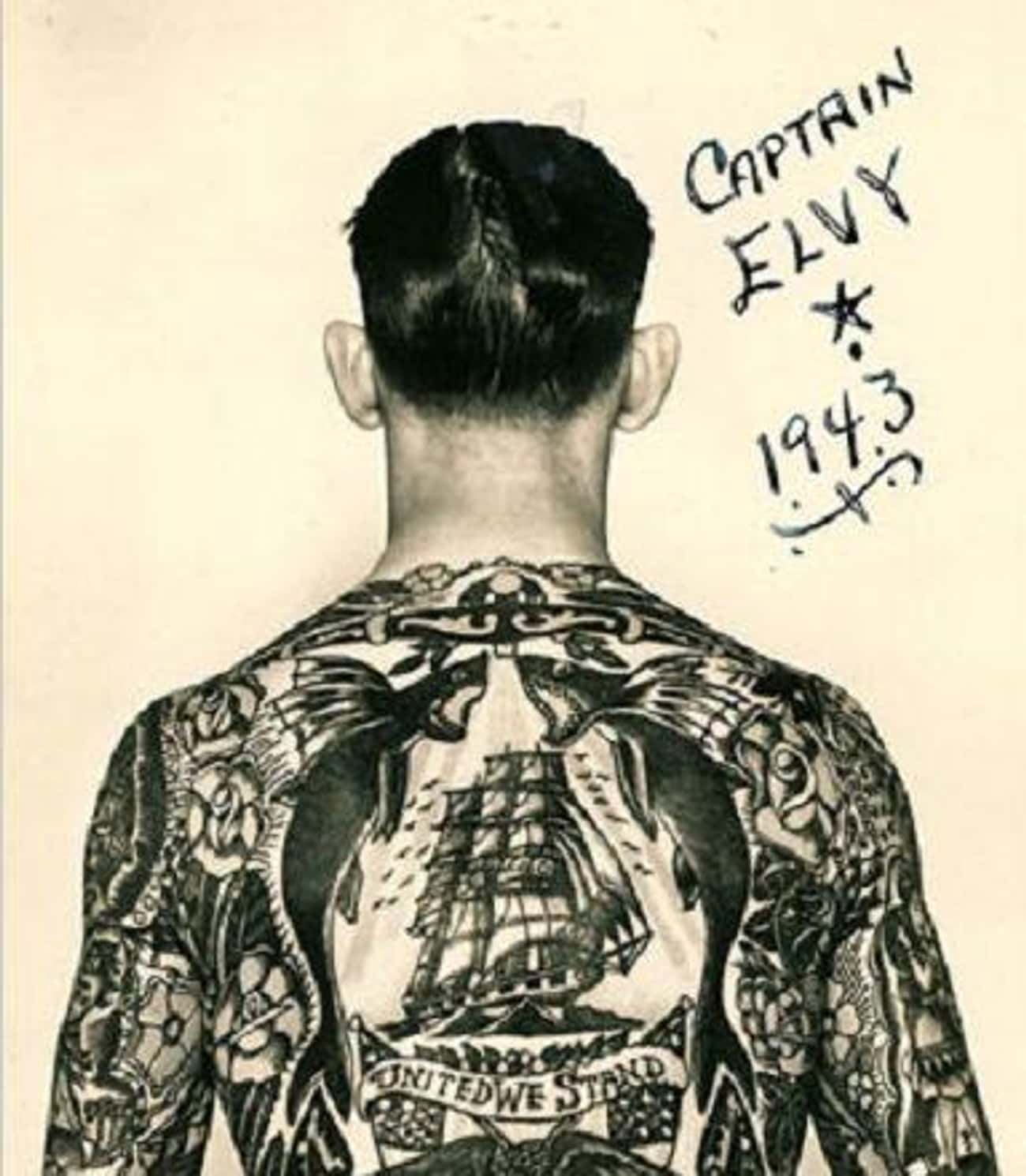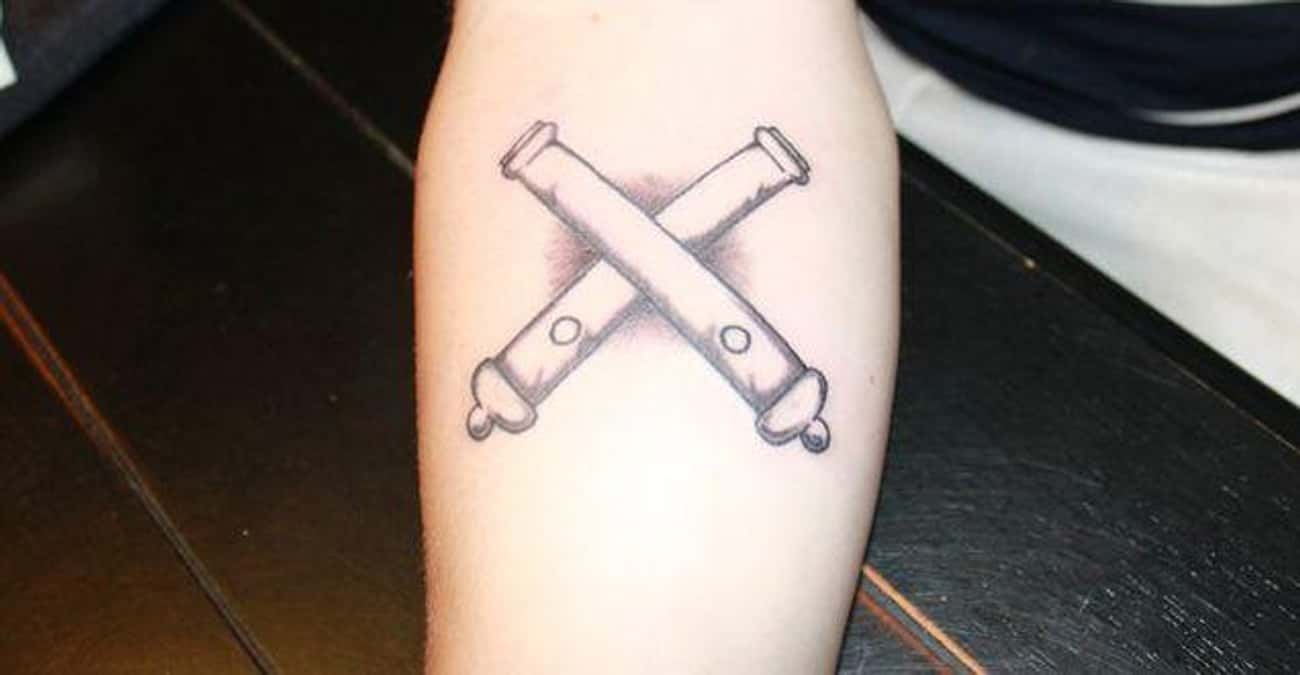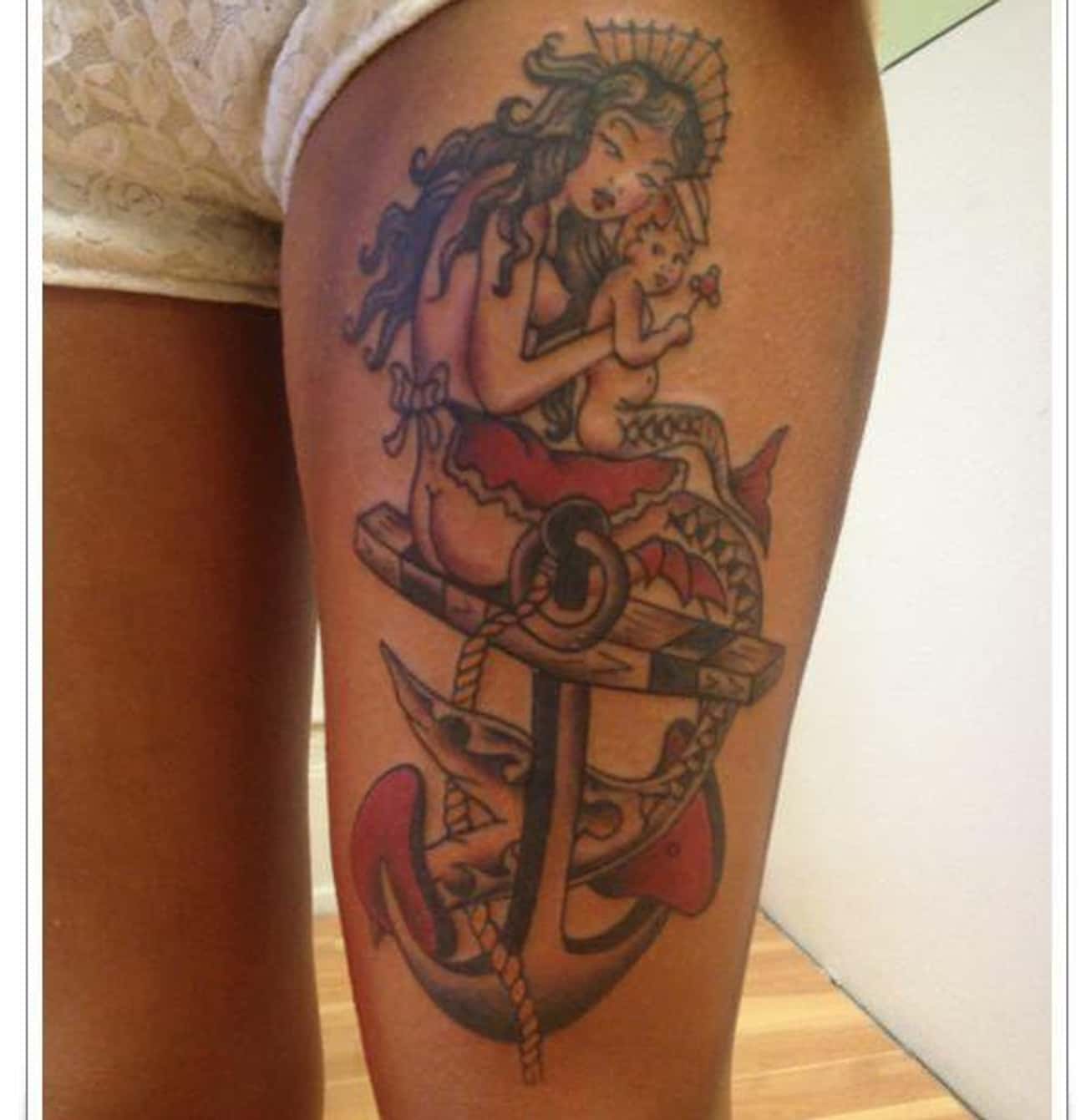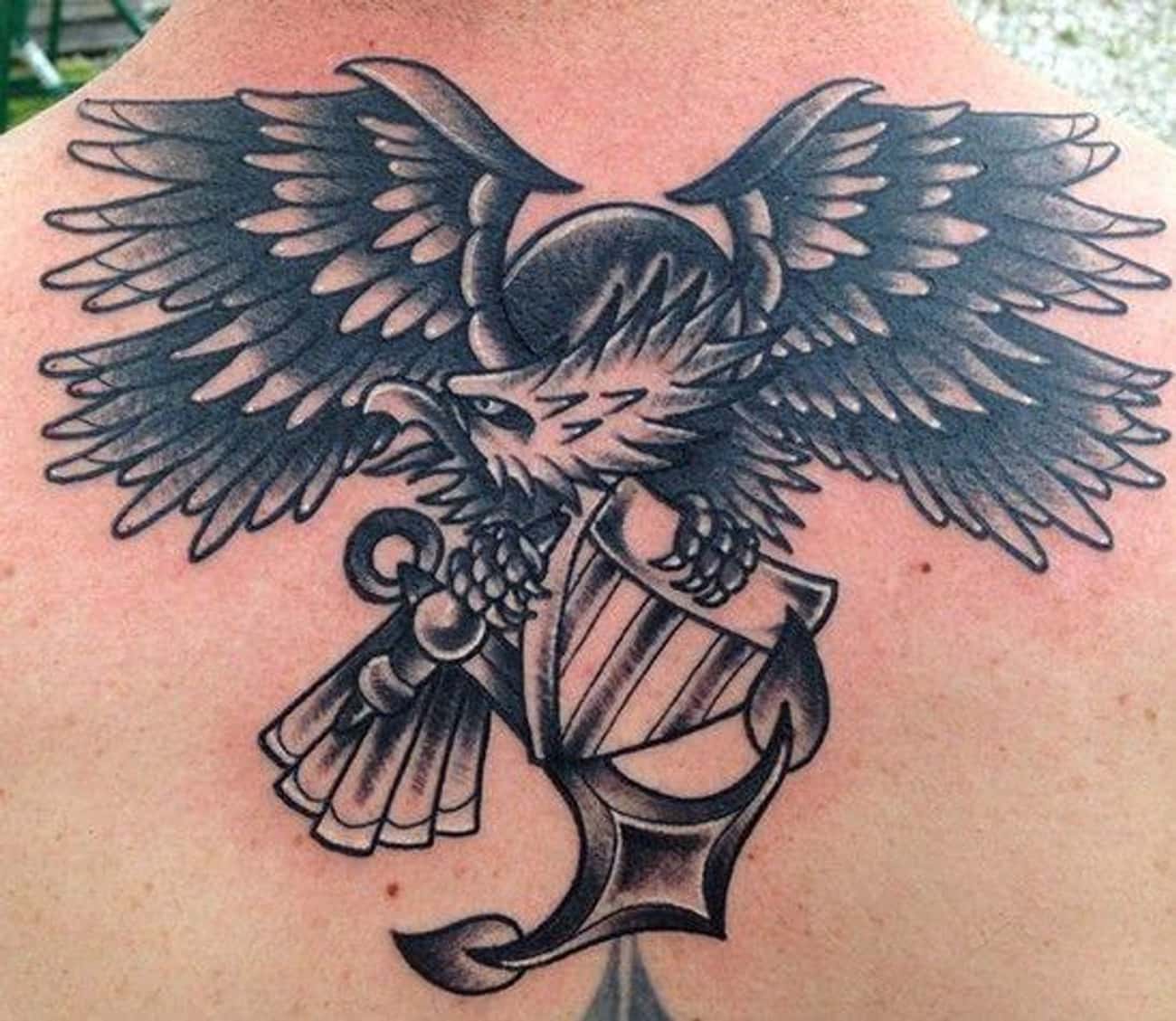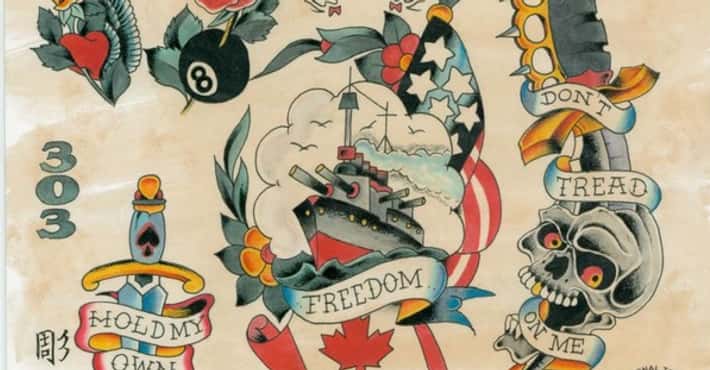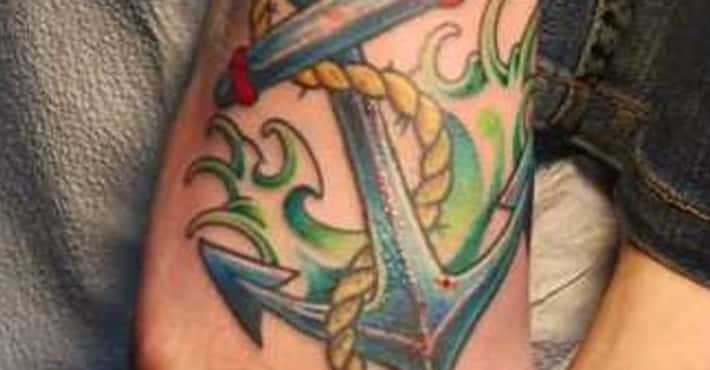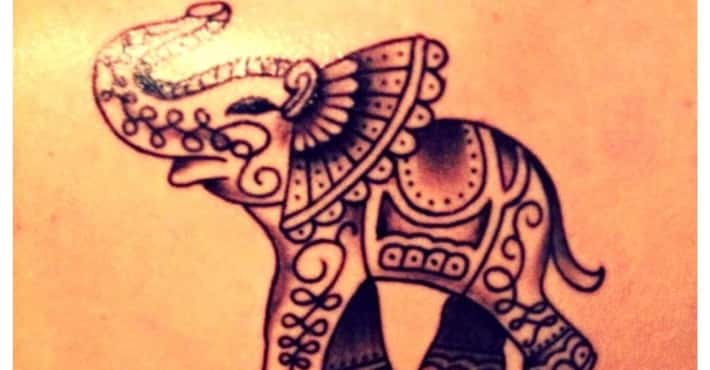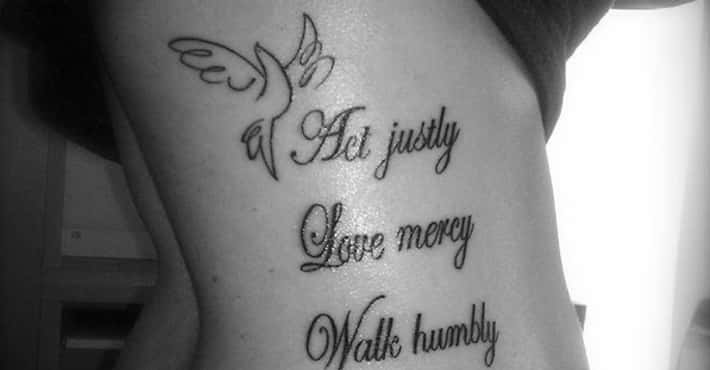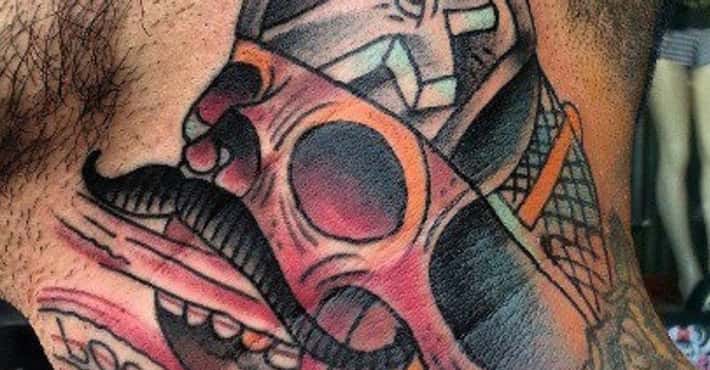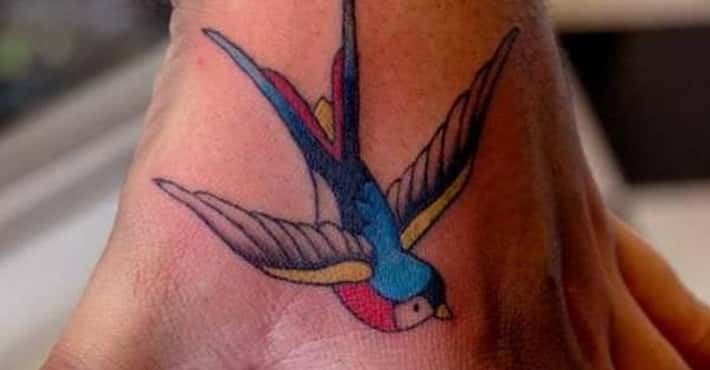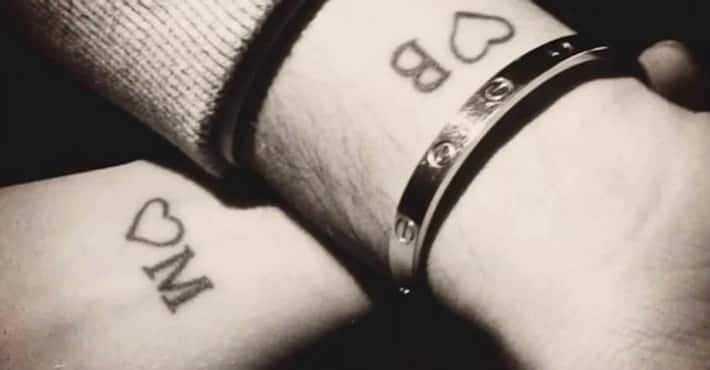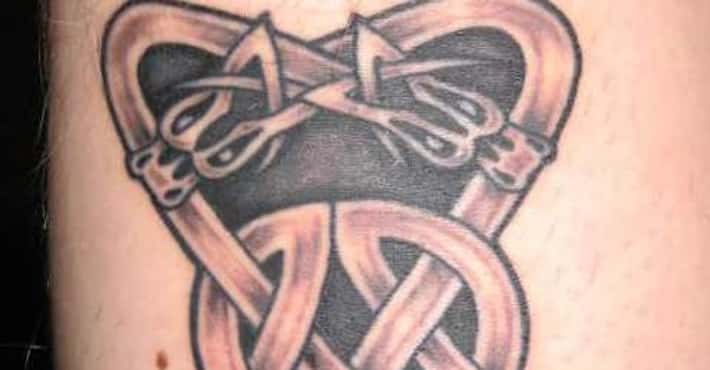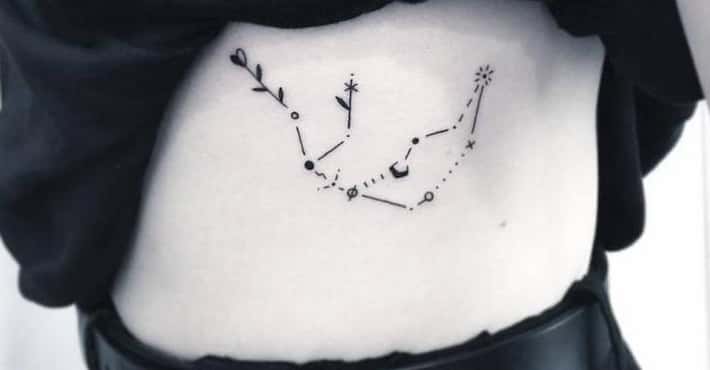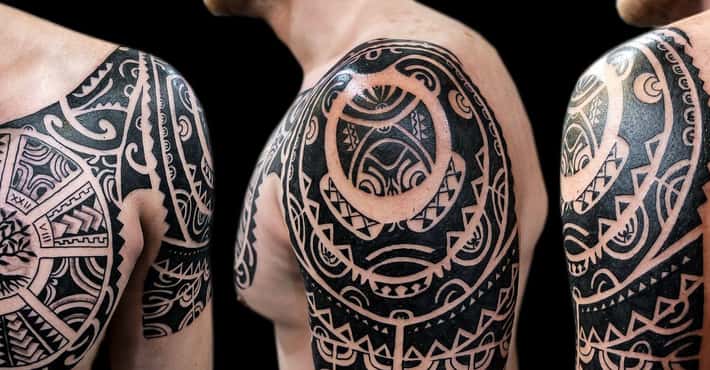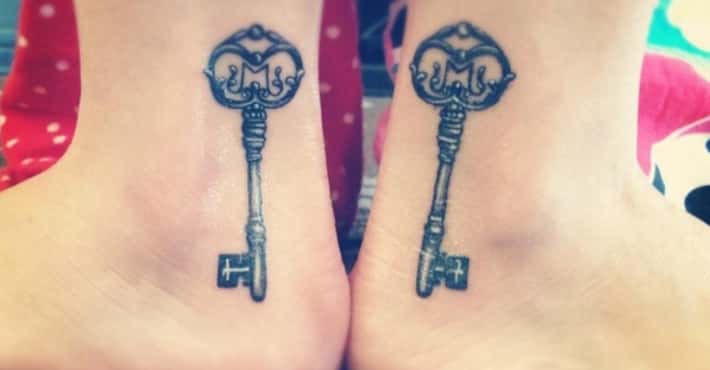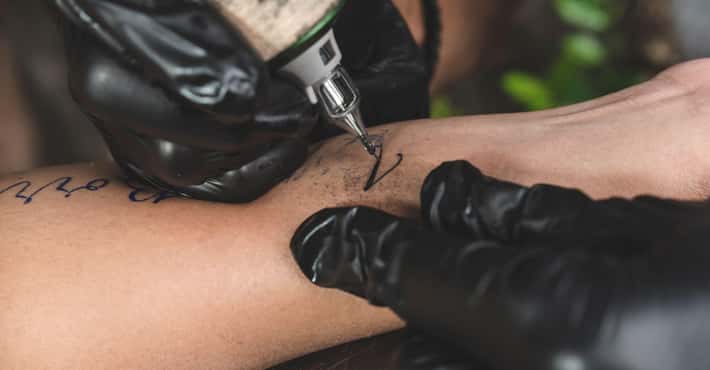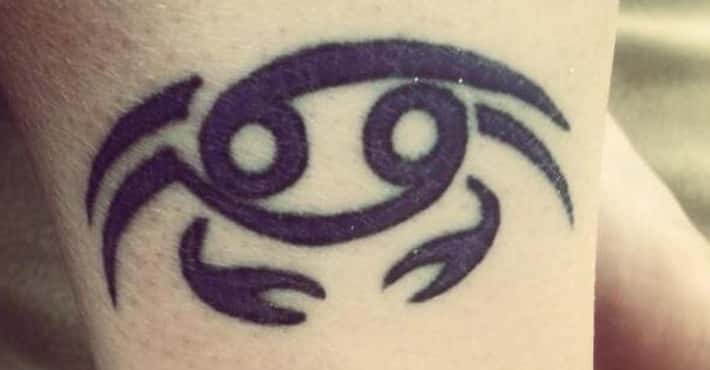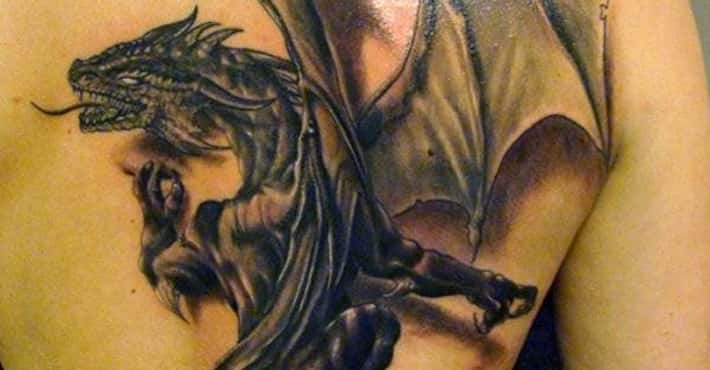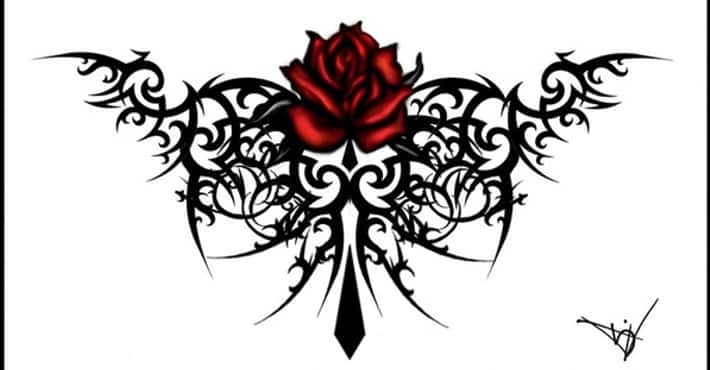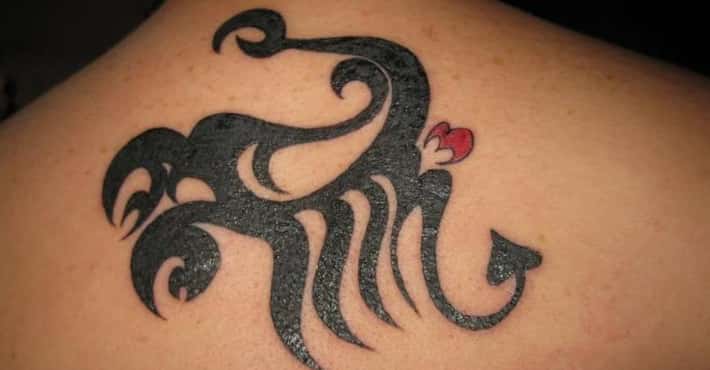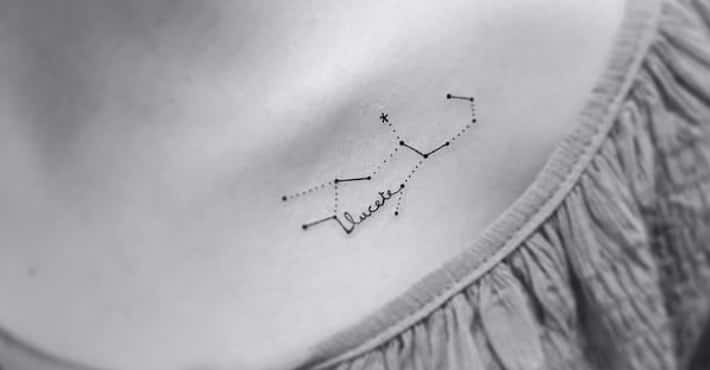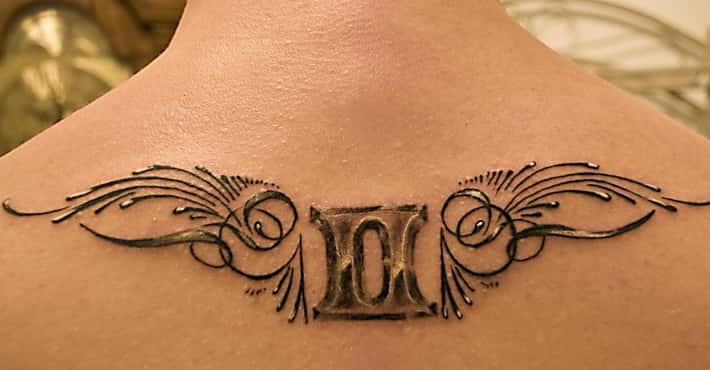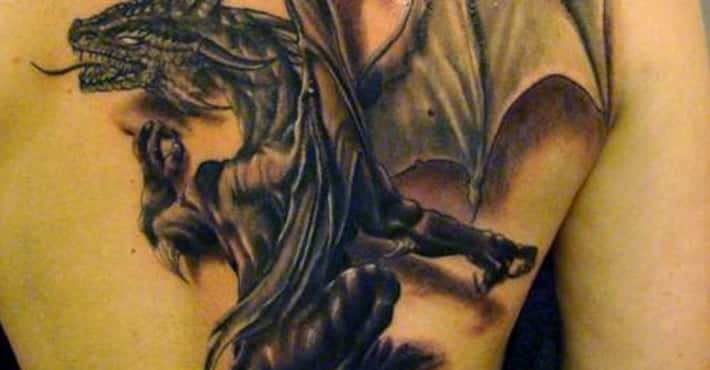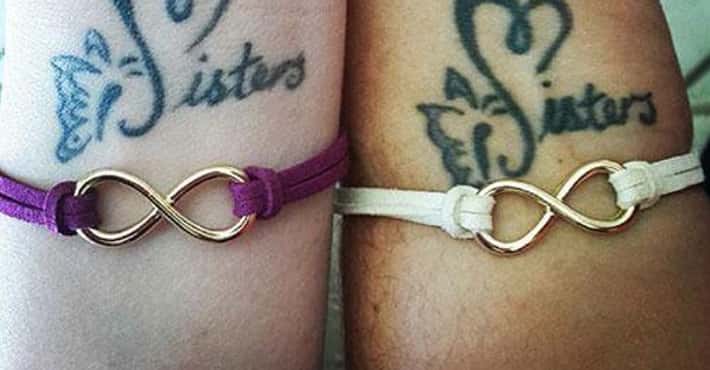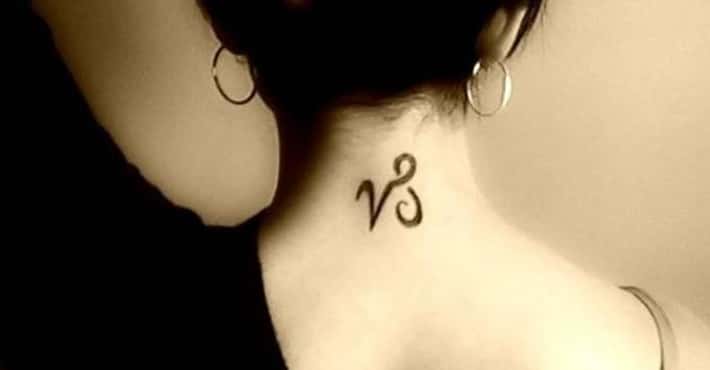14 Common Navy Tattoos and What They Mean
Swallow
Photo: Dejan Furlan TattoosA swallow tattoo represents 5,000 nautical miles sailed. It can also symbolize a sailor who intends to return home.Anchor
Photo: Public DomainAn anchor can symbolize a trip crossing the Atlantic, the stability of an anchor, or achieving certain ranks.Ship Mascots
Photo: Wikimedia Commons / CC-BYSailors often get tattoos based on the name or mascot of a ship they served on. This World War II sailor has a tattoo of a hornet based on his service on the USS Hornet aircraft carrier.'Hold Fast'
Photo: Public DomainThe words "hold fast" tattooed on the fingers or knuckles are a sailing tradition.Rope
Photo: Sailor Marc TattooingA rope tattoo, especially around the wrist, usually indicates the wearer was a deckhand on a ship.Pig and Rooster
Photo: Wikimedia Commons / CC-BYThese animals, usually tattooed on the feet or backs of the ankles, traditionally symbolize survival of a shipwreck. As both animals were often kept in wooden crates on ships, when a boat capsized, the crates would most likely be washed up on shore.
Another explanation for sailors who had a pig tattooed on the left knee and a rooster on the right was, “Pig on the knee, safety at sea. A cock on the right, never lose a fight."Nautical Star
Photo: SailorJerry.comAs the North Star was traditionally used by sailors for navigation, a tattoo of a star usually indicates that the wearer will find their way home.Turtle
Photo: SailorJerry.comA shellback turtle tattoo meant a sailor had crossed the equator on a voyage. These were sometimes applied as part of an elaborate initiation ceremony involving paying respects to the sea god Neptune, a humiliating talent show, and a bath in salt water.Golden Dragon
Photo: Wikimedia Commons / CC-BYA regular dragon meant a sailor had served on a ship berthed in China. A golden dragon symbolized crossing the International Date Line.Sailing Ship
Photo: ThreeYearsAtSea.comA fully-rigged sailing ship symbolized a sailor who had gone all the way around Cape Horn. After the Suez Canal was built, few ships sailed that far south, but the tattoo is still popular.Crossed Cannons
Photo: New Style TattoosA pair of crossed cannons signified the wearer had served as a gunner's mate or saw naval combat.- The US Navy banned nudity in the traditional pin-up girl tattoo, sending droves of sailors back to the parlor to get tails and shell bikinis inked on their nudes.
Dagger Through a Swallow
Photo: buzzle.comA dagger going through a swallow signified honoring a comrade lost at sea or in battle.Eagle
Photo: Trinity Tattoo CompanyAn eagle tattoo symbolizes patriotism and unity during times of war. They were common during World War II.


